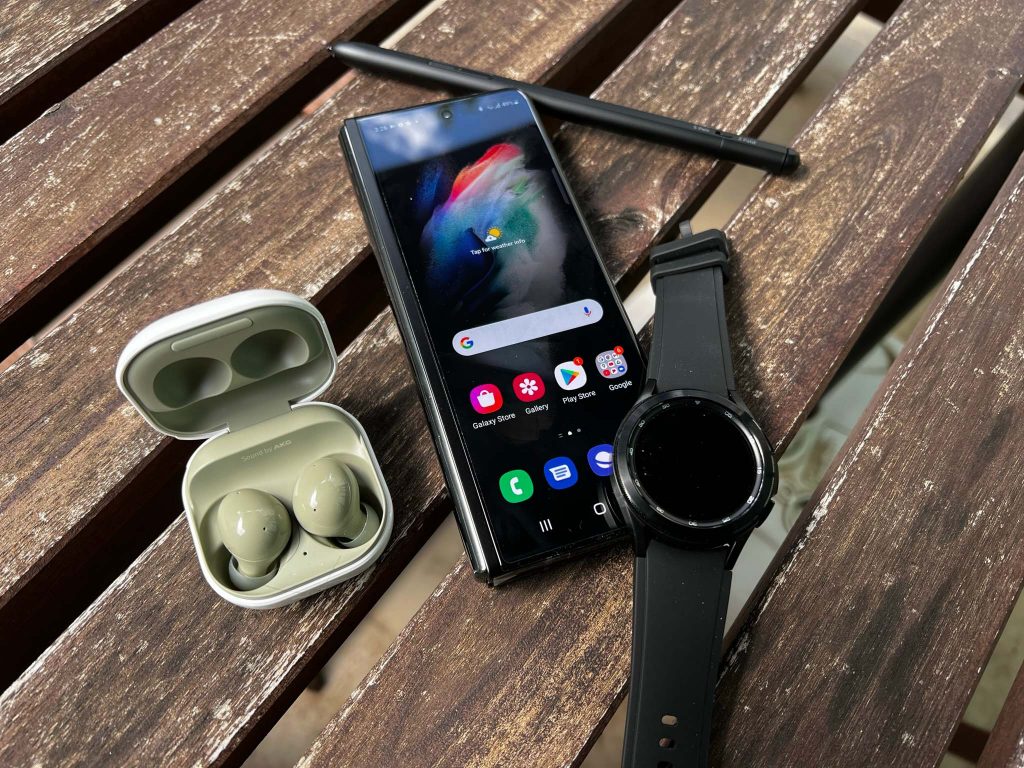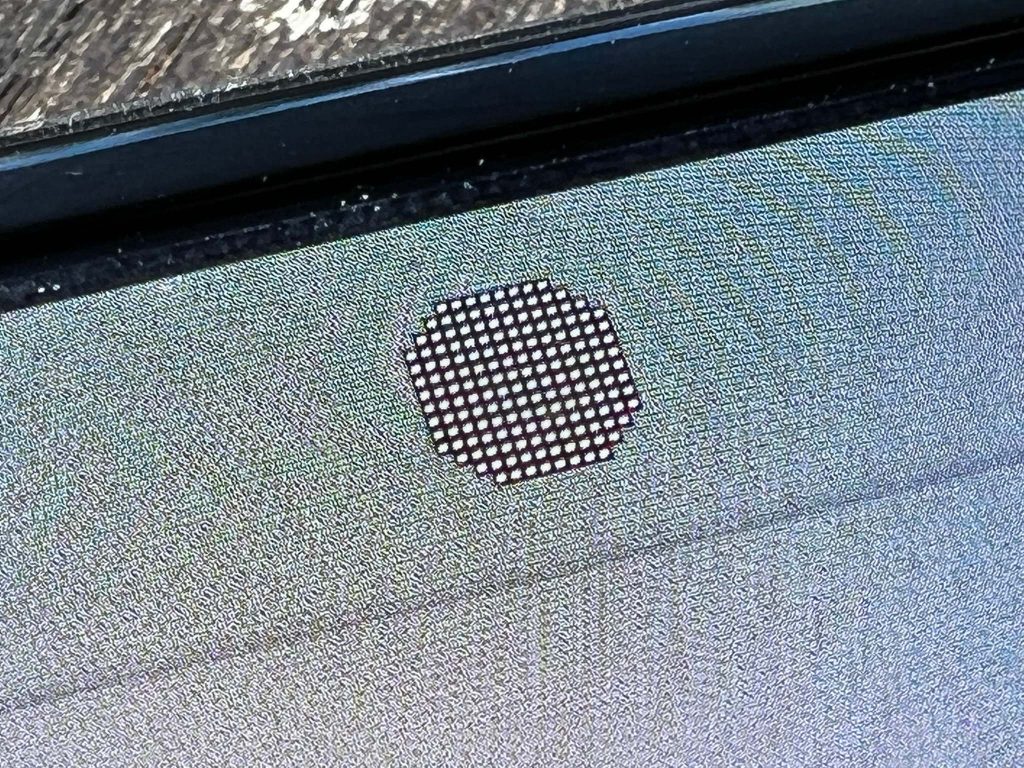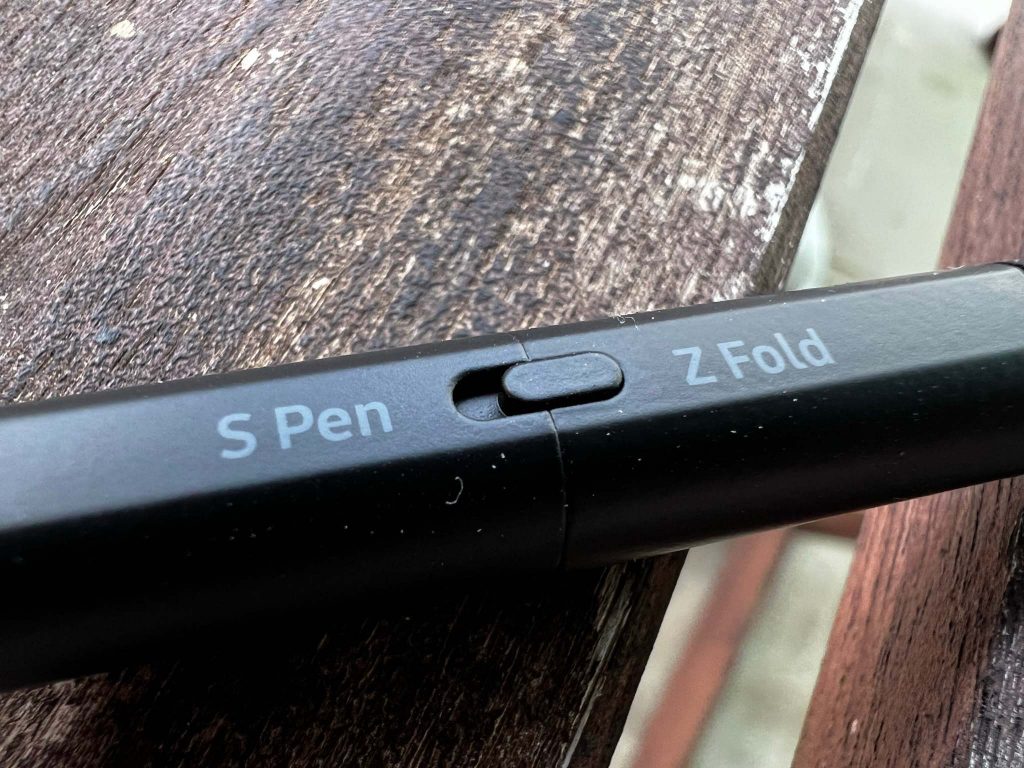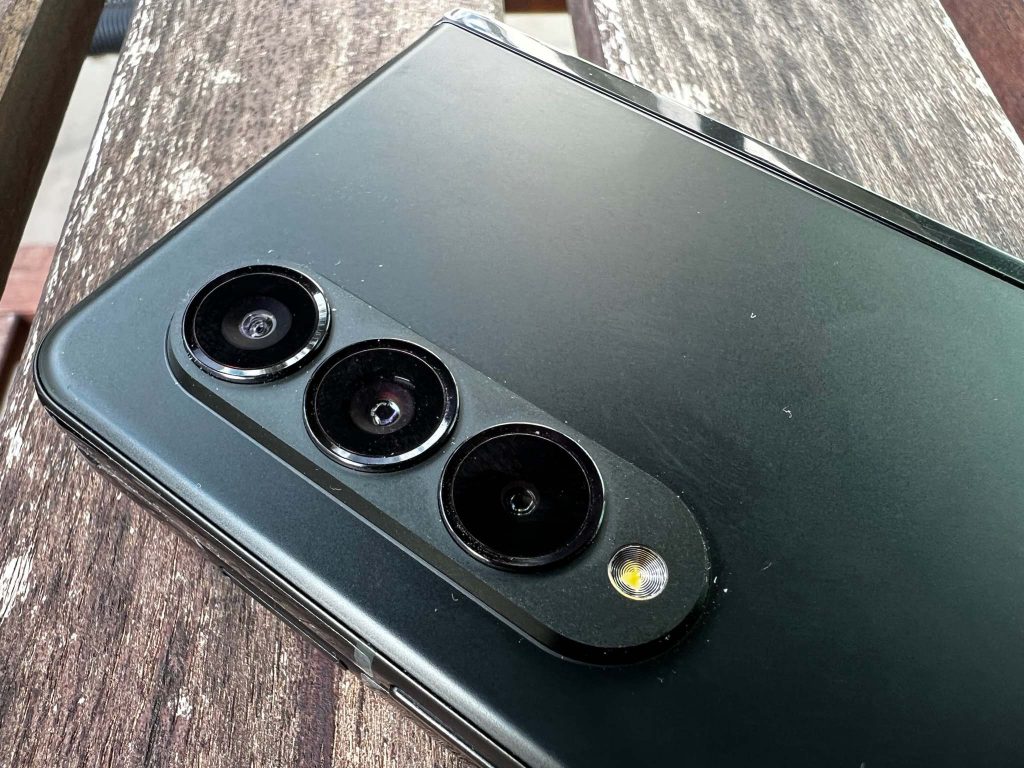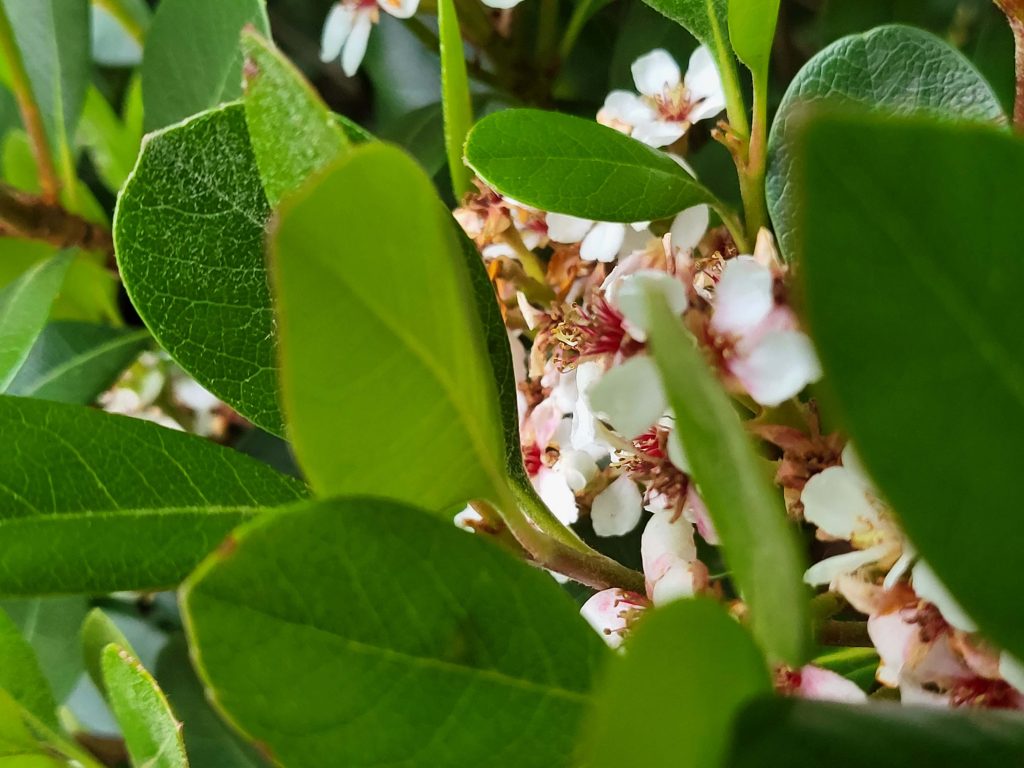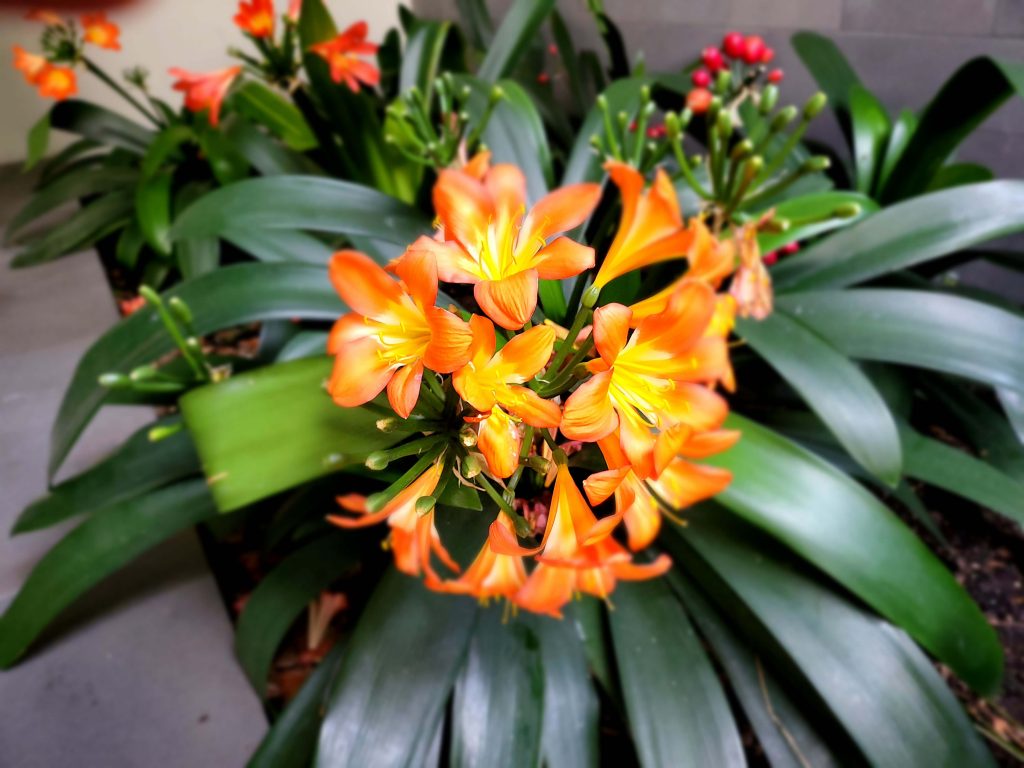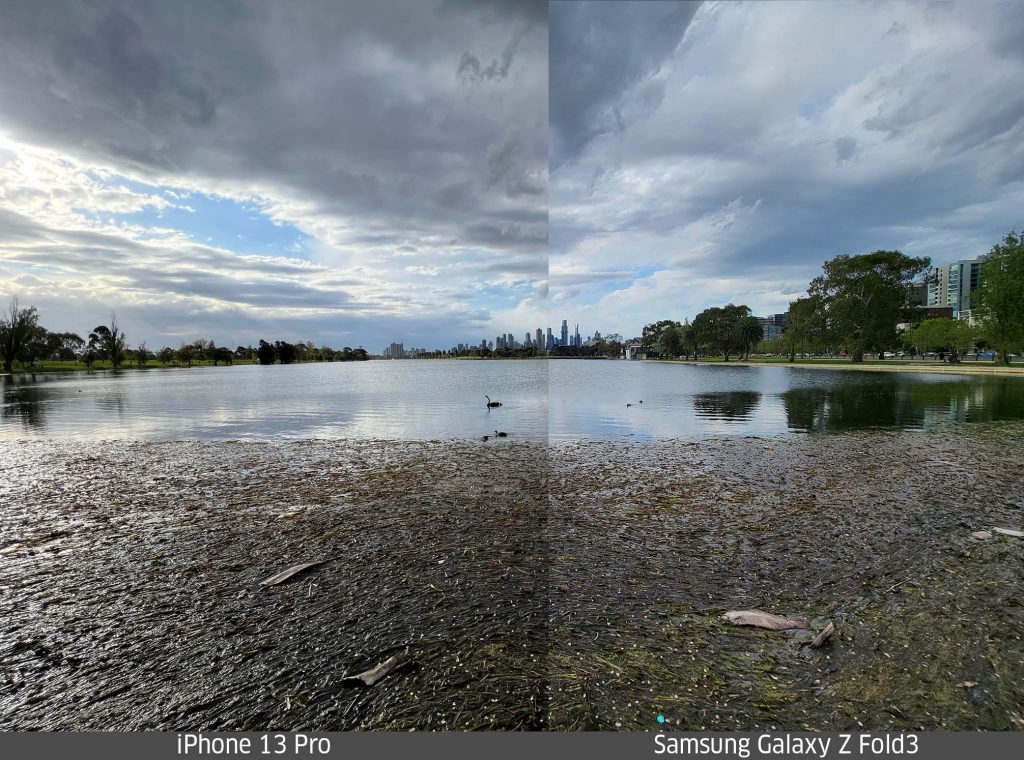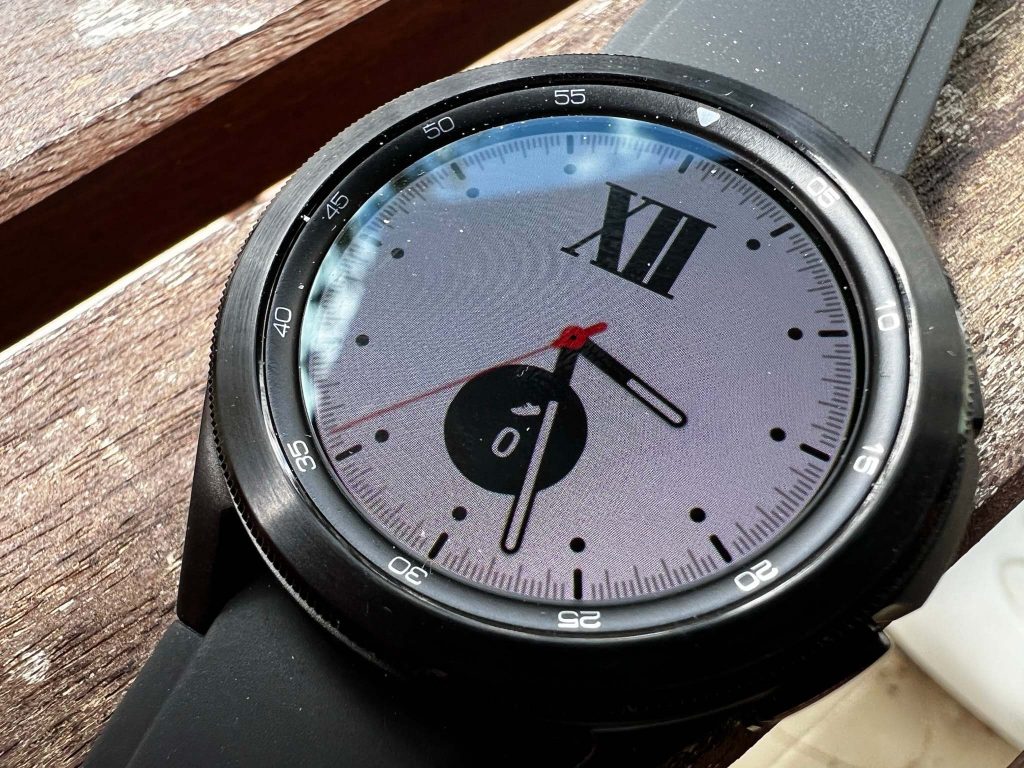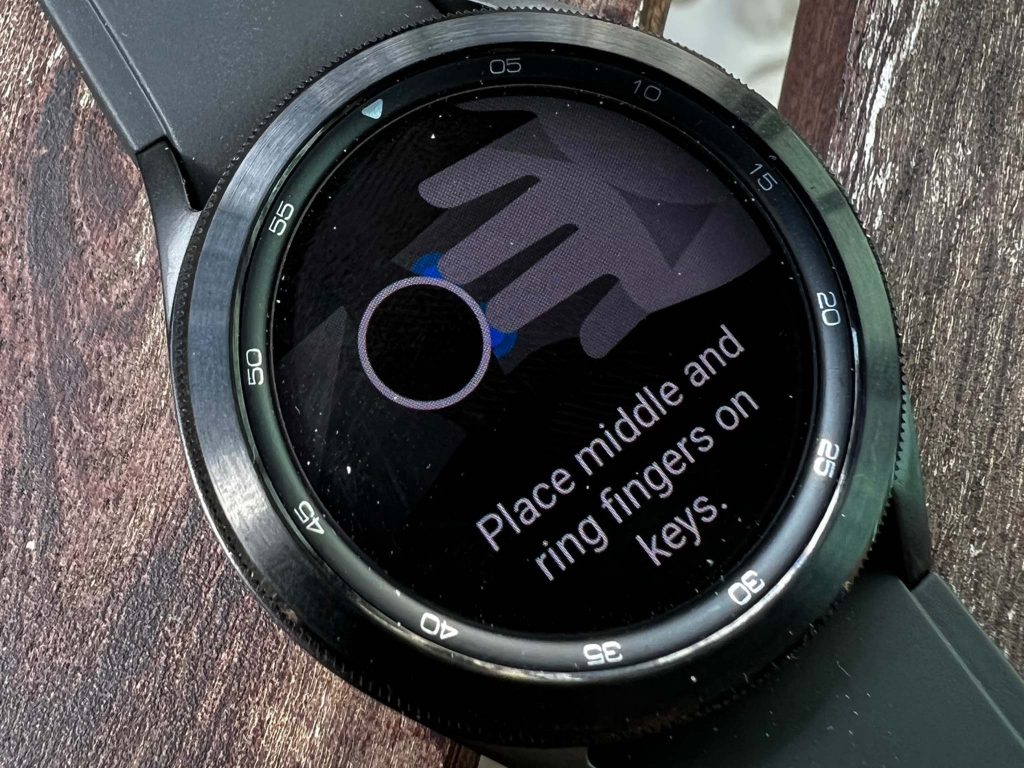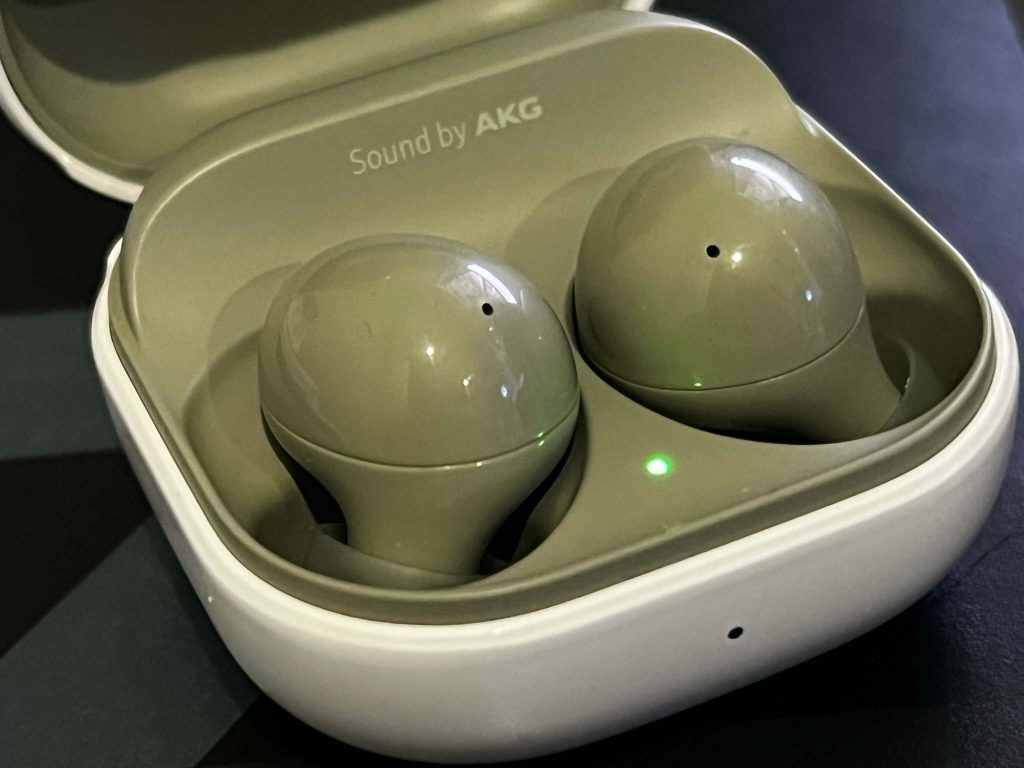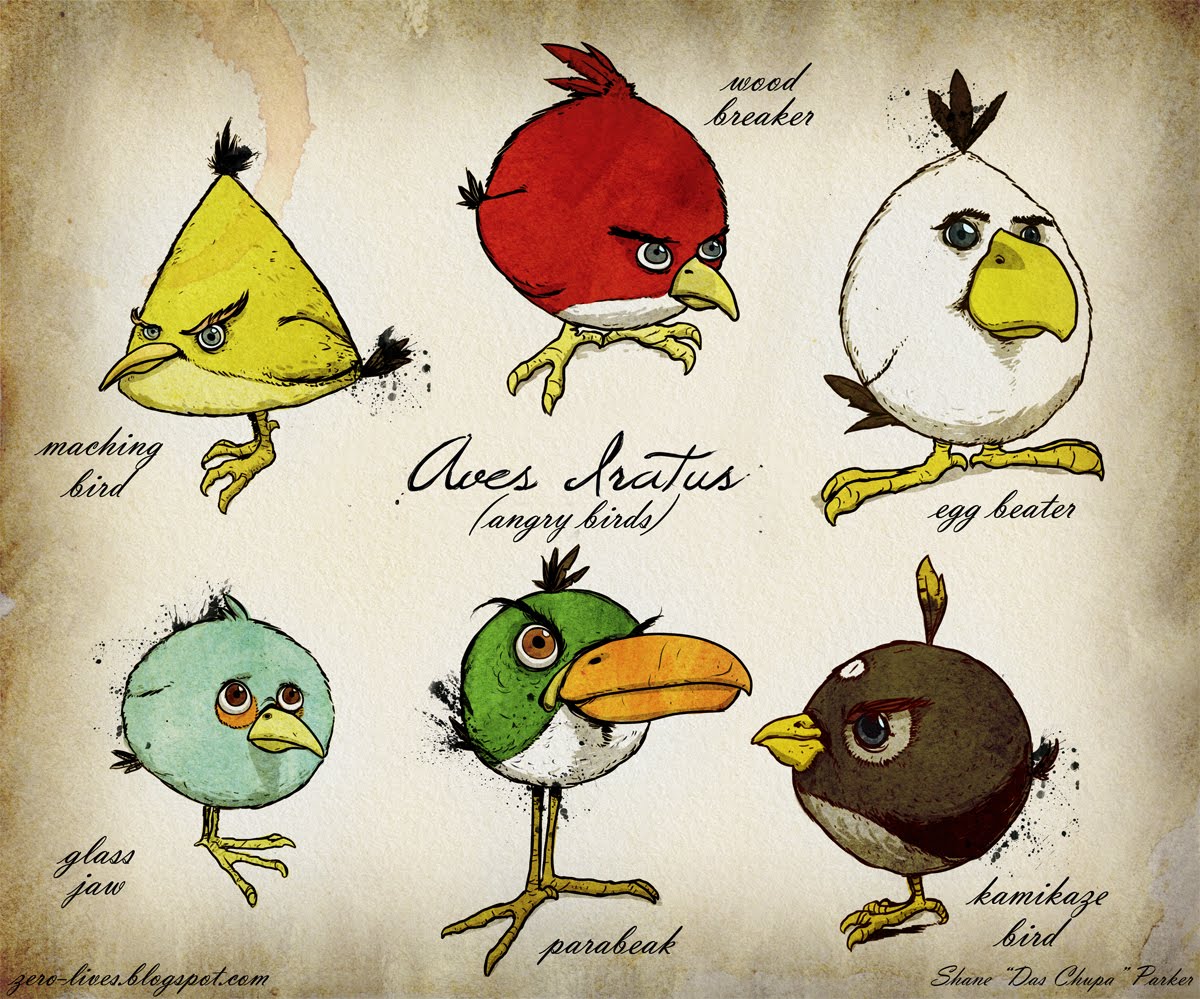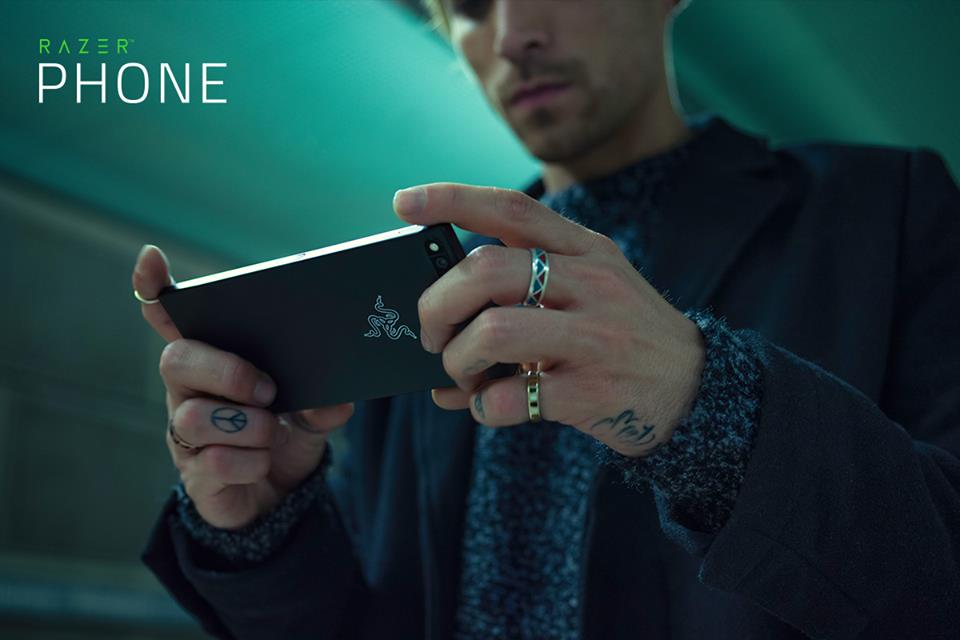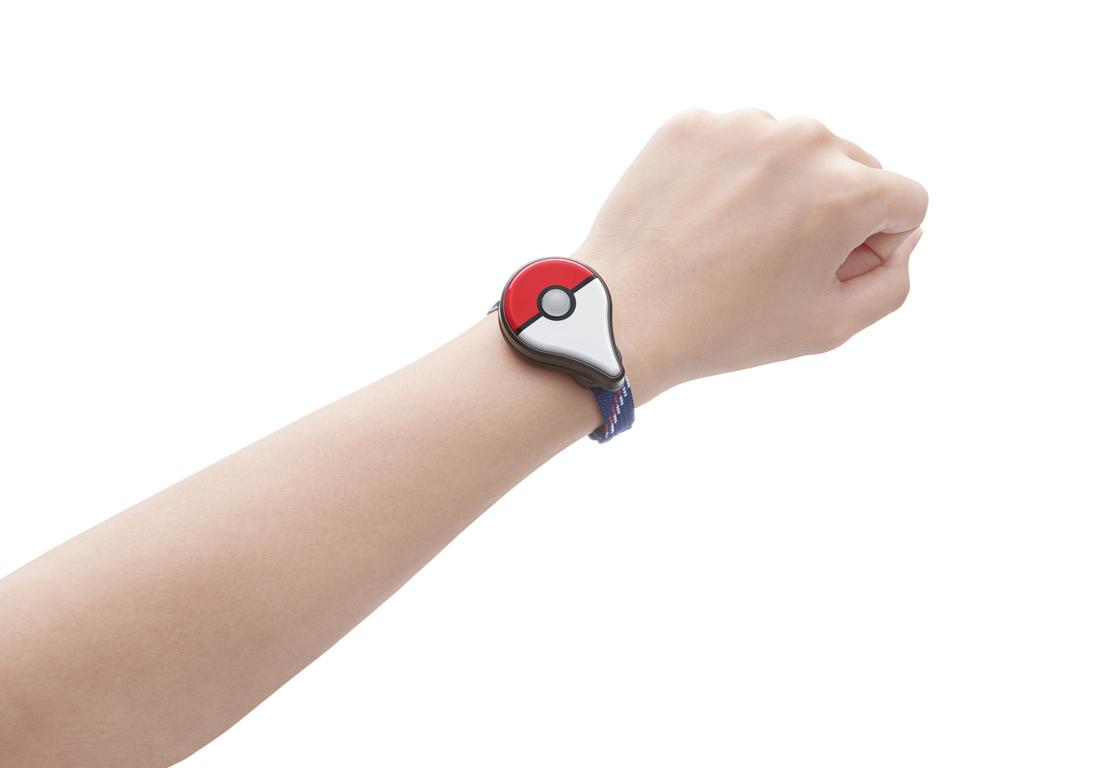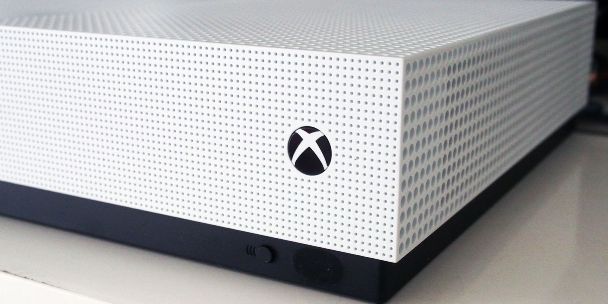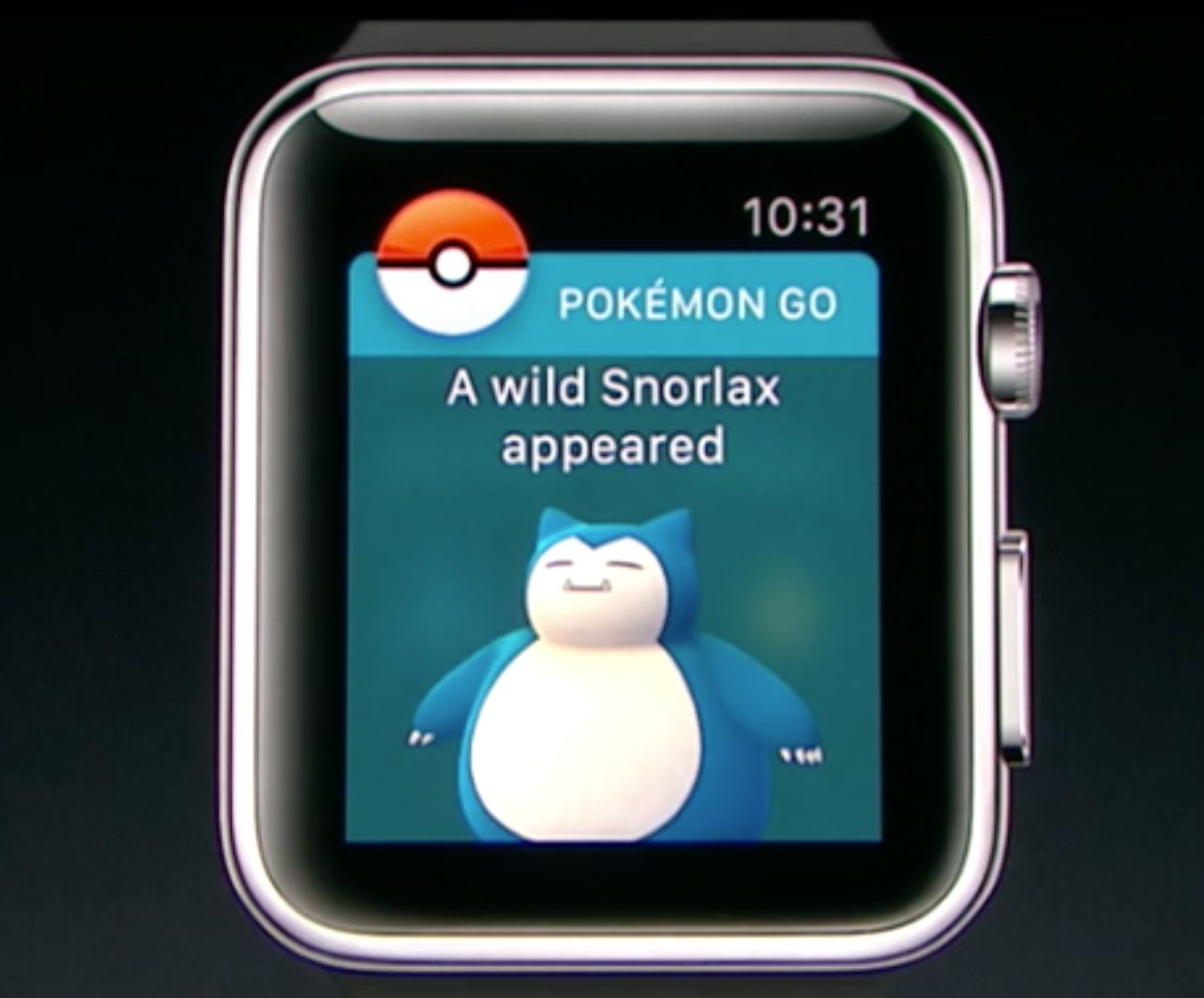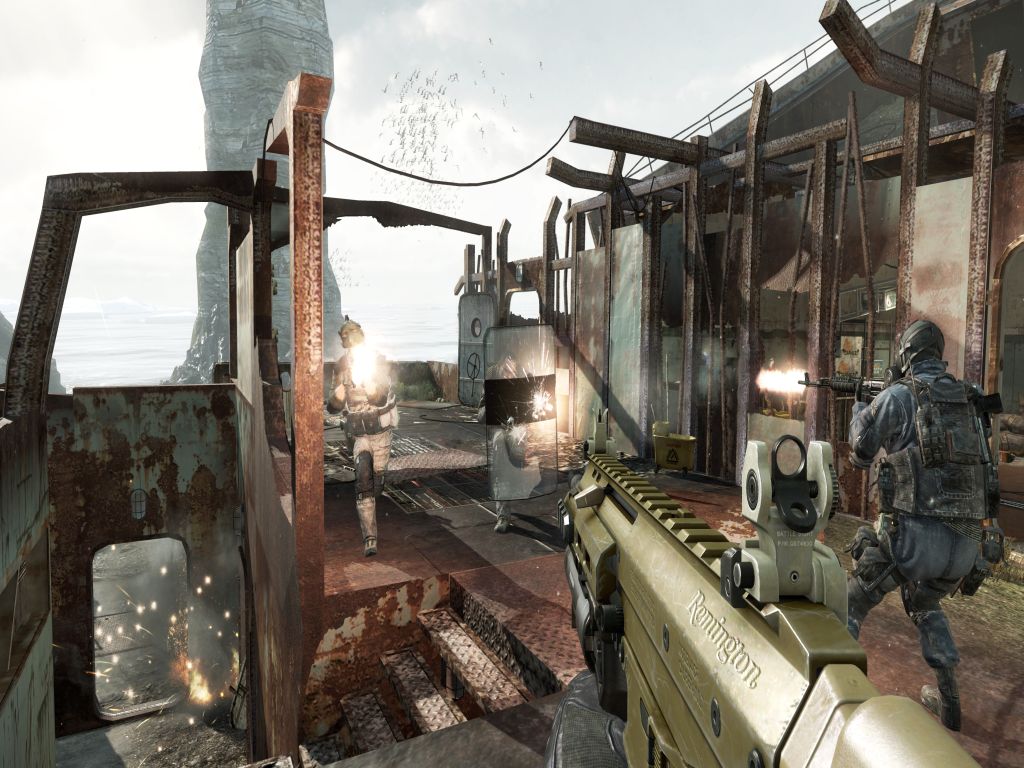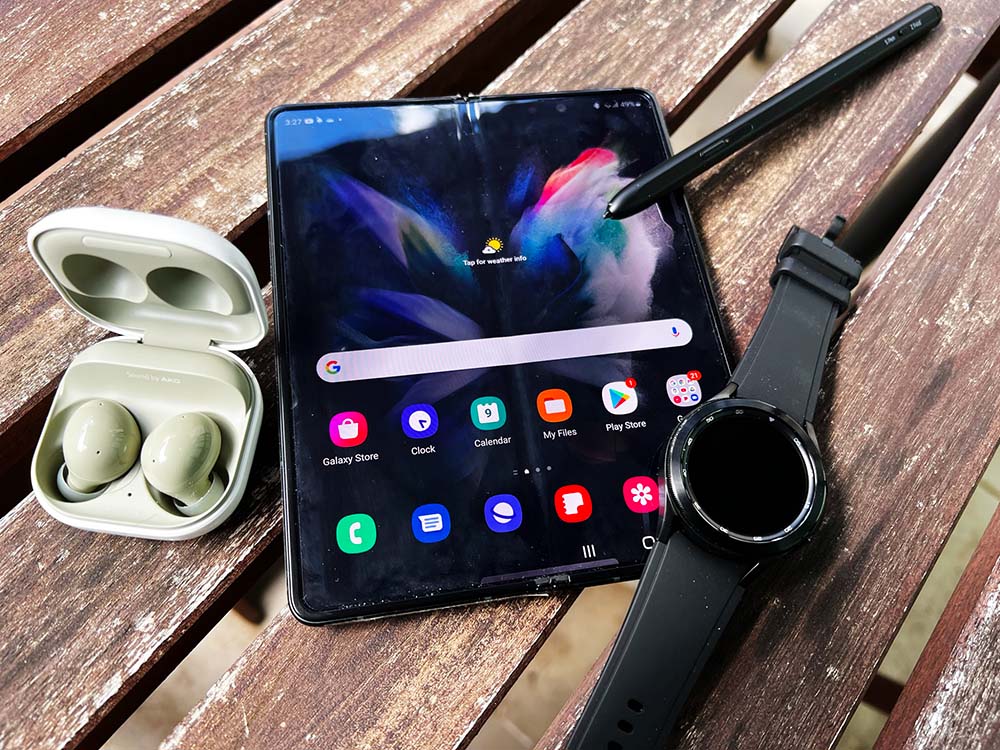
It’s been two years since foldable phone first hit the market, but it still feels crazy seeing one in the flesh. Despite several manufacturers producing variations, led by Samsung’s efforts with the Fold series, they’re hardly ubiquitous, a fact driven both by a high price-point and a still-forming spot in the marketplace.
Partially a phone, partially a tablet, yet fully both of those things, the latest Samsung Galaxy Z Fold3 is the first time I’ve ever actually gotten my hands on a foldable phone, and despite seeing countless other reviews and YouTube videos about the tech, there is something magical – and scary – about giving it a go for yourself.
The Fold3 is of course Samsung’s third go at the design, and while some will remember the very first batch of the first iteration in 2019 had issues with dust settling into its exposed hinge under the screen, the Fold3 feels a lot tougher. The hinge design completely protects the vulnerable foldable touch screen which still is at the centre of the device. The foldable screen itself, while apparently covered with a sturdier material than before, is still quite soft, and an absolute fingerprint and dust magnet, and should be treated with care. However, the hinge is shockingly sturdy, as the phone clamps shut with mightily, with the hinge also able to hold the screen open at various angles with some software taking it into account. Watching YouTube on half a folded screen, while the other half sits on a desk, is a cute idea.
When closed the Galaxy Z Fold3 is a fully usable, slim but weighty, Android phone, with a 6.2” AMOLED screen. Unlike earlier versions this outer screen takes up the entire front, with a holepunch front-facing camera that makes it a perfectly usable phone in its own right, despite the thicker folded body behind it. It also means you can unfold the device so the more powerful back cameras (wide, standard and zoom lenses) are pointed at you, and use them and the front screen for better looking selfies. It makes for great results, if a little unwieldy in practice. While you’re perfectly able to hold the Fold3 in one hand for a selfie, but the size and cost of it generally persuades you to use two. Yet another camera lies underneath the 7.6″ AMOLED foldable screen, covered by a low-res patch of transparent pixels which turn off at the appropriate time. The tech isn’t quite unnoticeable yet, but like the ever-present crease that divides the middle of the foldable screen, you get used to it.
The real benefit, of course, comes from having access to the larger foldable screen as a much more portable mini-tablet. Having a device that expands to a screen size approaching an iPad mini, yet fits in your pocket, is impressive and genuinely useful. While all apps will scale appropriately when switching between the slimmer front screen and larger inner screen (although not all support instant switching), the benefits are mostly felt in productivity and entertainment.
Using the Fold3 for Microsoft Teams meetings, for example, really shows off the benefit of having the extra screen real estate, being able to see a lot more boxes for video streams, as well as more detail in presentations. You can also run up to three apps multi-tasked when unfolded, which again helps for meetings to browse through information from other sources, as well as compiling notes.
The S Pen Pro and S Pen Fold Edition are also compatible with the Fold3, although the device lacks a convenient place to store your pen like the comparably sized Galaxy Note phone, leaving you to come up with your own solution. It performed generally beyond my expectations for the foldable screen, never leaving scratches or marks despite the lack of a hard glass surface, making it great for note-taking and brief doodles. As far as serious art goes, while I’m no great artist, the crease down the centre of the screen does seem to pose some issues, as it’s definitely felt while crossing between sides of the phone, and can disrupt lines drawn. It’s also worth noting that the S Pen does not work on the outer screen, meaning that you’ll need to unfold the device every time you’d want to use it, pretty much ruling out any quick note-taking like you might see on Samsung’s Galaxy Note line.
For consuming video content, especially while travelling (for those who can do that these days), the Fold3 is tough to beat. Again, having access to a larger screen that can fit in your pocket is a godsend for train trips, and 4:3 content fills up the entire square-ish display quite nicely, making it by far my favourite way to watch Star Trek: Voyager over the last few weeks. However the battery isn’t quite as impressive as you might hope, from a device which theoretically has twice the space for a battery as a normal phone, averaging maybe five or six hours or so with heavy use of the foldable scree, including general use and video, and generally a full day with just outer screen use.
As for games, it performs quite well, with a snappy Qualcomm Snapdragon 888 processor and 12GB of RAM. The Fold3’s best trick, transitioning from the front-screen to the foldable screen seamlessly by opening up the device, isn’t supported by all games, particularly older ones. While it’s extremely cool to play something like Asphalt 9 on the front screen, open the phone up and keep playing exactly from where you left off, with the game resizing to the new dimensions, it sucks when the feature doesn’t work. For instance, the phone will pause and prompt you to restart the app for something unsupported like the older Super Mario Run.
There’s also just all the other features we’ve come to expect from top-of-the-line Samsung smartphones, like smart share, wireless charging and power sharing and DeX connectivity for use as a mini-computer driving a display – although after a few years of using a Note 10+, I’m not convinced that DeX is a genuine contender for a laptop replacement, just a nice-to-have for emergencies.
The quality of the cameras on the Fold3 is also decent, especially given there’s a grand total of five (one 10MP on the front screen, one 4MP underneath the folding screen, and three 12MP cameras on the back). The front-facing cameras perform well, although obviously the lower-resolution folding screen camera lacks the clarity of the one on the front screen, which is a shame as it’s the one that will mostly be used for video conferencing.
The rear cameras are similar to ones found on other Galaxy phones, and a step up from the array on my Galaxy Note 10+. The wide angle and the standard camera are quite good, offering vibrant colour and a nice depth of field effect, even without the artificial blurring with the ‘Food’ filter. However, the 2x telephoto lens doesn’t quite push in as far as you’d often like, and artificially zooming in produces mushy and smeary results, that lack some of the fine detail on other phone cameras. Compared to the cameras on the new iPhone 13 Pro, which offers a 3x telephoto lens, detail is clearer on Apple’s device, both in wider shots and zoomed in. You can see a comparison photo using standard default settings on both cameras below for a rough idea, although it is CMS compressed.
The Samsung ecosystem has also grown, of course, over the years to include wearables, headphones and more. A smartwatch like the Samsung Galaxy Watch4 Classic integrates seamlessly with the Fold3, particularly for notifications and quick glances to see messages and alerts you can discretely attend to. I’ve been using a 46mm Galaxy Watch for the last couple of years, and they’re well designed watches – the extruded bezel is a great protector for the watch’s screen, especially compared to the relatively exposed Apple Watch.
It’s a bit of a shame that the best features of the Galaxy Watch4 Classic aren’t the best paired with the Fold3. The size of the Fold3 just isn’t practical for taking jogging (even if it’s surprisingly light given its nature, at 271g), as it’s still a thicc boy when folded, and it doesn’t actually fold completely closed, leaving an opening between its screens which could accumulate dust and nasty bits while exercising.
The Galaxy Watch4 is actually a pretty useful fitness tool, with a body composition function that requires you to make contact with two of your fingers on its buttons (presumably to complete a circuit) as it measures exactly how much fat your body is composed of (and muscle, if any). A blood pressure sensor and workout tracker are also great tools to have, along with an interesting sleep analysis function – if you can be bothered wearing the watch to bed and not letting it charge. It also runs WearOS from Samsung, as opposed to Tizen on older Samsung smartwatches, apparently allowing for better connectivity with Samsung devices.
As for audio, the Galaxy Buds2, while not much to look at, especially in the medicinal ‘olive’ colour, are genuinely very comfortable earbuds that fit well inside your ear holes and stay put very effectively. The sound is crisp, powerful and bass-forward, if that’s how you prefer listening to your music, and they also feature some pretty neat noise-cancelling features. It’s not as powerful as the kind of active noise-cancelling you’d get from dedicated BOSE headphones, but from your phone you can easily switch modes to suppress conversations around you in the office reasonably well, or even pipe in audio from outside so you can listen to your music, while also hearing people around you if you’re needed. The clarity of the audio is still superior to say, the standard Apple Airpods, which is impressive given how tiny the design of these buds are.
I will say I’m not a massive fan of the design of the charging case, which opens like a ring case, rather than Apple’s Airpod Jols-box, which really requires two hands to do and a fair bit of attention, given the Galaxy Buds2 are quite small and light and easy to fumble with.
The Bottom Line
For productivity and content consumption, the Samsung Galaxy Z Fold3 is unmatched in the scope of what it can deliver in a single package. There’s no denying that it’s at the apex of Android phones right now, offering a unique form factor that genuinely improves the way you interact with a smartphone, especially when it comes to productivity and entertainment. The ecosystem around it helps as well, as S Pen support is welcome if not without niggles, and integration with the Galaxy Watch line and Buds is seamless.
We just have to talk about the price. A base of AU $2,499 outright for the smaller size option. That’s a lot of dollarydoos. At that price-point, it’s wallet-liquefyingly expensive for a new phone. I suppose Samsung are looking at the cost for a new high end phone, plus an additional cost for a mini tablet, and then tallying them together. Maybe the flexible OLED screen technology is just still too expensive to engineer and produce effectively at a lower price point, but it precludes pretty much all punters except those with a lot of disposable income, or those able to take advantage of the trade-in deals Samsung offers or the payment plans for years with a telco like Optus.
For work, games and movie-watching, the Galaxy Z Fold3 is a superb device that stands alone in the market. If you’re getting a phone for fitness or music predominantly, it may be better paired with a smaller option and the fitness functions of the Galaxy Watch4. For photography, Apple’s new line-up in the iPhone 13 Pro series impresses at the moment, thanks to its clever neural processing and lovely lenses. Once travel begins to open up in the country and world again, and people need to take their work with them, the use cases for the Galaxy Z Fold3 will no doubt make themselves clearer, but for now there’s no denying it’s the coolest phone on the market.
This article is based on a Samsung Galaxy Z Fold3, Galaxy Buds2, Galaxy Watch4 Classic and S Pen Pro provided for review by Samsung.

